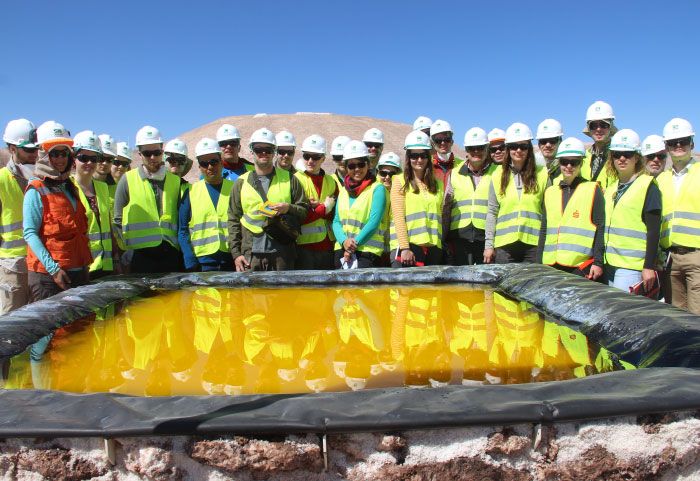The demand for cobalt, lithium or copper will grow 1,000% by 2050, the United Nations Conference on Trade and Development (UNCTAD) projected.
These three minerals are found in large quantities in commodity-dependent developing countries.
«Demand for some of these commodities could increase by 1,000% by 2050,» UNCTAD estimated in a report. This growing demand should constitute an economic opportunity for countries that host significant reserves of these basic products.
Overall, current (digitization) and emerging (Industry 4.0) technological revolutions will change commodity sectors and related global value chains and have a significant impact on commodity-dependent developing countries.
Although commodity-dependent developing countries are not ready to implement Industry 4.0 technologies, there are ways to take advantage of them.
Lithium
First, according to UNCTAD, commodity-dependent developing countries will benefit from increasing demand for their commodities that are driving digitization and the adoption of a wide range of cutting-edge technologies, from renewables to the Internet of Things and Big Data.
These products include lithium, cobalt, manganese, graphite, nickel, aluminum, copper, silver, bauxite, iron, lead, and rare earth elements.
To assess the readiness of commodity-dependent developing countries to take advantage of current revolutions, it is important to first understand where they stand in the technological landscape.
Some of the elements of the previous technological-economic paradigms are still being applied in different economic activities of developing countries that depend on commodities.
For example, in many of these countries, mechanization (first technological revolution) has not reached the majority of agricultural holdings, a large part of the population lacks access to electricity (third technological revolution), many productive sectors have not been able to take advantage of economies of scale and international competitiveness (fourth technological revolution), and the digital revolution (fifth technological revolution) has been limited to the use of mobile phones and digital platforms.
Challenges
In many commodity-dependent developing countries, universal access to electricity has not yet been achieved and the network of roads, highways and ports is still weak (putting them in the fourth technological revolution).
Most commodity-dependent developing countries still have a weak infrastructure of high-speed fixed Internet connections, such as fiber optics and broadband, or high-speed mobile connections.
Digital and frontier technologies also require technological knowledge and skills, which may be less in most developing countries.
Developing skills to use digital technologies requires that people be exposed to these technologies and actively participate in ‘learning by using’, which is a challenge in commodity-dependent low-income developing countries and a a large part of the population is illiterate.
Thus, commodity-dependent developing countries are less prepared to adopt and adapt these technologies than non-commodity-dependent developed, transitional developing countries.
Commodity-dependent developing countries and agricultural-dependent countries are less prepared than commodity-dependent developing countries dependent on the energy and mining sectors.
![]()

